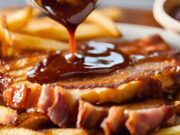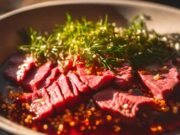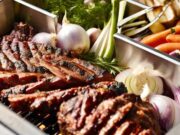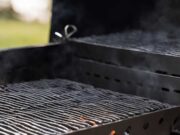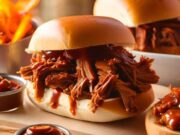- Key Takeaways:
- Types of Electric Smokers
- How to Choose the Right Electric Smoker
- Essential Accessories for Electric Smoking
- Choosing the Right Wood for Smoking
- Preparing Meat for Smoking
- Basic Smoking Techniques
- How Long to Smoke Different Types of Meat
- Common Mistakes to Avoid When Smoking
- Top Tips for Smoking Success
- Frequently Asked Questions
If you are eager to elevate your outdoor cooking game, mastering the art of smoking with an electric smoker is an excellent starting point.
This guide provides comprehensive information, covering everything from selecting the right smoker and essential accessories to choosing the appropriate wood and preparing your meat.
With practical tips and insights on common pitfalls to avoid, you will be well-equipped to create delicious smoked dishes that impress family and friends.
Prepare to enhance your culinary skills significantly.
Key Takeaways:
- Choose the right electric smoker: Consider size, features, and budget when selecting an electric smoker for the best smoking experience.
- Proper preparation is key: From choosing the right wood to preparing meat, proper preparation is essential for successful smoking with an electric smoker.
- Master the basics: Understanding basic smoking techniques and proper smoking times for different types of meat will help you achieve delicious, flavorful results every time.
Types of Electric Smokers
You will find several types of electric smokers available on the market, each designed to meet specific cooking preferences and flavor outcomes. This includes vertical smokers and models from Masterbuilt’s Gravity Series, which offer advanced temperature control features.
How to Choose the Right Electric Smoker
Choosing the right electric smoker requires careful consideration of factors such as your cooking space, temperature control options, and specific cooking needs to ensure it aligns with your smoking and grilling preferences.
Size is a primary consideration; whether you are preparing meals for a large gathering or simply for your family, selecting a smoker with the appropriate capacity is crucial to meet your requirements.
Ease of use is also essential, as many users favor models that include digital controls for precise temperature settings and timers. Features such as built-in meat probes can greatly enhance convenience by allowing you to monitor internal temperatures without the need to open the smoker.
When evaluating different products, it is advisable to consider reputable brands like Masterbuilt, which offer a variety of models suited to different skill levels and preferences. Reading customer reviews and comparing features will assist you in making an informed decision that ultimately leads to delicious results.
Essential Accessories for Electric Smoking
To enhance your electric smoking experience, consider investing in essential accessories such as wood chips, temperature probes, and smoke boxes. These tools optimize the smoking process, ensure safety, and deliver a flavorful outcome.
Using high-quality wood chips from various trees like hickory, mesquite, or applewood allows you to infuse distinct flavors into the meat, making each bite a culinary delight. It is crucial to select the appropriate wood type based on the dish, as different woods uniquely enhance the taste. Additionally, maintaining a clean cooking space is vital. This can be achieved by routinely cleaning the smoker and disposing of any ash buildup, which prevents potential flare-ups and ensures even cooking.
A reliable temperature probe will efficiently monitor the internal temperature, safeguarding against undercooked meals that could lead to foodborne illnesses.
Choosing the Right Wood for Smoking
Selecting the appropriate type of wood is essential for achieving the desired flavor profile in smoked meats. Options such as apple, oak, hickory, pecan, and mesquite provide diverse culinary experiences through their unique smoking characteristics.
Understanding the distinct properties of these woods can significantly enhance your smoking endeavors. For example, apple wood imparts a mild, fruity sweetness that pairs exceptionally well with poultry and pork, while hickory delivers a robust, smoky flavor ideal for richer cuts of beef.
Combining woods, such as blending the boldness of mesquite with the subtlety of cherry, can create a multifaceted flavor experience that elevates the meat’s natural taste. If you are experimenting with various meats, pecan is an excellent choice, complementing both beef and pork with its sweet yet nutty accent, transforming a standard dish into something truly memorable.
Preparing Meat for Smoking
Preparing meat for smoking requires specific techniques, such as marinating and seasoning, to enhance tenderness and flavor. This ensures that cuts like pork shoulder, brisket, and ribs are well-prepared for the smoking process.
Each type of meat necessitates a unique approach, particularly regarding the duration of marinating. For example, brisket benefits from a longer marinade, ideally soaking overnight to absorb a robust mix of spices and moisture, while ribs may only need a few hours.
It is essential to layer flavors effectively by using either dry rubs or wet marinades that are rich in herbs and spices. The timing of when you add these flavors can significantly impact the final result; starting early allows them to penetrate deeply, resulting in a mouthwatering taste.
By paying attention to these details, you can elevate your smoking experience.
Basic Smoking Techniques
Basic smoking techniques in an electric smoker emphasize the importance of maintaining consistent heat, ensuring proper ventilation, and exercising patience to achieve the rich flavors that define smoked meats.
For novice enthusiasts, understanding temperature management is crucial; maintaining the optimal range can significantly impact the final outcome of the meat. While the electric smoker handles much of the work, it is essential not to underestimate the value of patience. The essence of smoking lies in time, and rushing the process can lead to disappointing results.
Safety practices also play a vital role in this process, such as positioning the smoker away from flammable materials and closely monitoring the wood chips to prevent flare-ups. By embracing these techniques and respecting the smoking process, new users can position themselves for a successful smoking experience, resulting in tender and flavorful meat.
How Long to Smoke Different Types of Meat
Understanding the appropriate smoking times for various types of meat, such as brisket, ribs, and pork, is essential for achieving the ideal balance of tenderness and flavor.
Specific cooking durations will vary depending on the cut and thickness of the meat.
Common Mistakes to Avoid When Smoking
When using an electric smoker, it is important to avoid common mistakes that can disrupt the smoking process and impact flavor. Neglecting to preheat the smoker properly, overcrowding the cooking space, or rushing the process can all lead to subpar results.
These pitfalls can result in uneven cooking and disappointing outcomes, so it is essential for you to grasp the importance of temperature control and adequate airflow. To prevent these issues, it is advisable to invest time in reading the manufacturer’s instructions, which offer valuable insights into optimal settings for different types of meat. Ensuring that the smoker has enough space is critical for proper smoke circulation, which enhances overall flavor.
Safety should always be a priority; consistently monitor internal temperatures with a reliable meat thermometer. Remember that patience is essential—great barbecue is a slow process that rewards those who are willing to wait.
Top Tips for Smoking Success
To achieve remarkable success with your electric smoker, consider implementing effective strategies such as closely monitoring the temperature, selecting high-quality wood, and experimenting with various recipes to enhance the flavor of your meats.
Pay attention to the smoke levels—too much smoke can overpower your dish, while too little may result in a bland flavor profile. Selecting the right type of wood is essential, as different woods impart unique tastes; for instance, fruit woods like apple and cherry provide a milder sweetness, whereas hickory offers a bolder, more robust flavor.
As you explore different cooking methods, don’t hesitate to pair smoked items with marinades or glazes that complement their flavors. Additionally, regular maintenance of your smoker is vital—not only for optimal performance but also for safe operation. Ensure that you clean your equipment after each use and inspect it for any potential issues to guarantee a seamless smoking experience.
Frequently Asked Questions
What is an electric smoker?
An electric smoker is a modern device used for cooking and flavoring food through the process of smoking. It uses electricity to heat up wood chips and produce smoke, which infuses the food with a smoky flavor.
Why should I use an electric smoker?
Electric smokers are convenient and easy to use, making them perfect for beginners and experienced smokers alike. They also provide consistent temperature control, making it easier to achieve perfectly smoked meats every time.
What types of food can I smoke in an electric smoker?
You can smoke a variety of foods in an electric smoker, including meats, fish, vegetables, and even cheese. The options are endless, and experimenting with different types of food is part of the fun of mastering the art of smoking with an electric smoker.
Do I need any special skills to use an electric smoker?
No, you do not need any special skills to use an electric smoker. With a little bit of practice and following the instructions, anyone can become a master at smoking with an electric smoker.
How do I maintain my electric smoker?
To maintain your electric smoker, make sure to clean it after every use and regularly check for any damage or wear and tear. It is also important to keep the smoker in a dry and covered area when not in use to prevent any rust or damage.

Can I use an electric smoker in any weather?
Most electric smokers are designed to be used in any weather, but extreme weather conditions may affect the temperature and cooking time. It is important to have a reliable power source and to monitor the temperature closely during extreme weather conditions.








